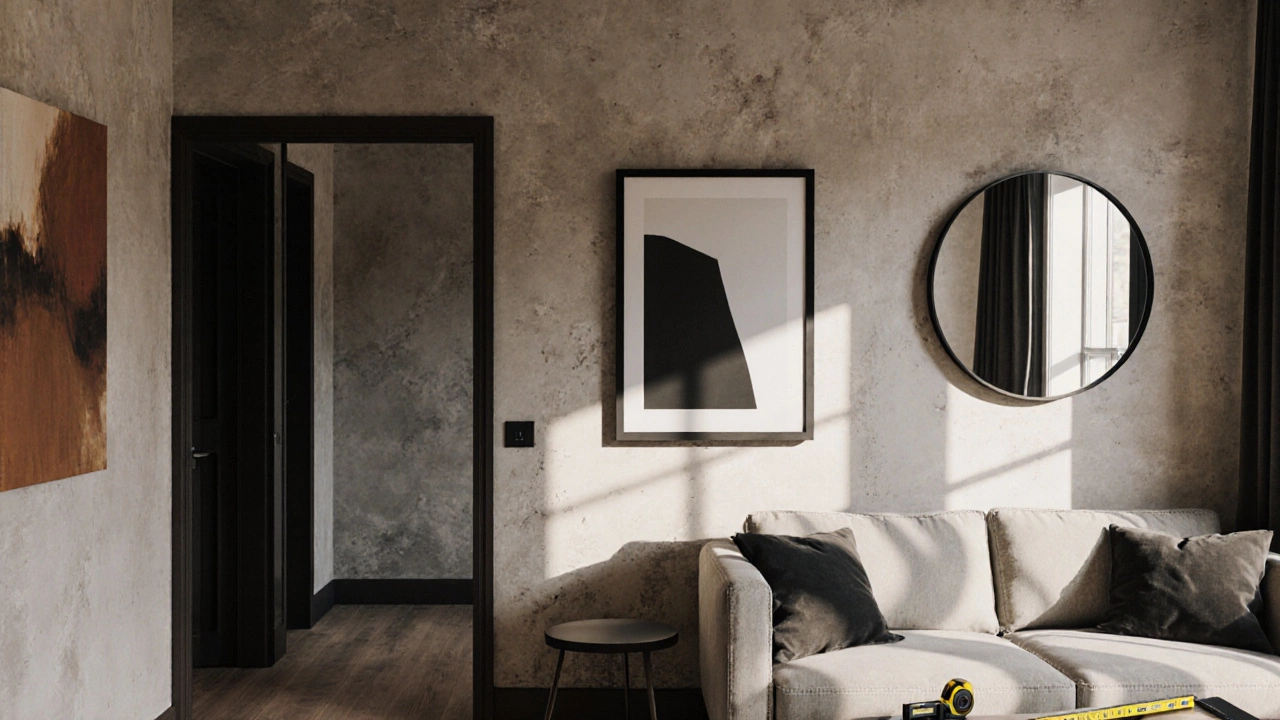Wall Decor Rules – How to Style Your Walls Right
When working with Wall Decor Rules, a set of guidelines that help you choose, arrange, and maintain wall finishes for a balanced and appealing interior. Also known as wall styling guidelines, it covers colour selection, texture mixing, and artwork placement. These rules are the backbone of any room makeover because they tell you what to add, what to skip, and how to keep the look cohesive. Below you’ll find the core ideas that keep walls from looking chaotic or outdated.
Core Elements of Wall Decor
Choosing the right wallpaper, a patterned or textured wall covering can instantly change a room’s mood. A bold print adds drama, while a subtle grass‑cloth brings warmth. The wall decor rules say that pattern scale should match the room size: large designs suit spacious areas, small repeats work best in tighter spaces. When you pair wallpaper with paint, keep the colour palette simple – two‑tone combos avoid visual overload.
Speaking of paint, the second pillar is paint, a liquid pigment that creates a uniform colour on walls. Paint offers flexibility because you can change it later with less effort than wallpaper. The rule here is to use matte finishes for low‑traffic walls and satin or semi‑gloss for high‑traffic areas like hallways. Light‑reflecting paints make small rooms feel larger, while darker shades add intimacy to larger spaces. The rule that "paint influences perceived room size" is a classic example of how colour and lighting work together.
Another often‑overlooked piece is filler art, small decorative pieces that fill empty wall space without dominating the scene. Think of tiny prints, metal accents, or woven hangings that sit between larger statements. Filler art balances the visual weight of a big painting or a statement wallpaper, preventing the wall from feeling empty or crowded. The rule suggests using filler art at about one‑third the height of the main piece and keeping its colour palette in sync with surrounding décor.
Textured surfaces bring a tactile dimension to walls. Textured wallpaper, wall covering with raised patterns or woven fibers is a modern way to add depth without bulky panels. The rule for texture is simple: pair a textured element with smooth finishes to avoid a muddled look. For example, a textured accent wall works well behind a sleek paint‑finished sofa backdrop. This creates a visual hierarchy where texture draws the eye but does not compete with other design elements.
Putting these pieces together, you can see how each rule interlocks. Wall decor rules encompass colour selection, material choice, and placement strategy. Choosing wallpaper influences visual texture, while paint shapes perceived space. Filler art complements the overall scheme by adding balance, and textured wallpaper adds depth without overwhelming the room. Together, they form a cohesive system that turns a blank wall into a curated backdrop.
Now that you understand the main guidelines, you’ll notice a pattern: every decision ties back to a core principle—balance, scale, and harmony. The next part of this page lists articles that dive deeper into each of these areas. Whether you’re looking for budget‑friendly luxury tips, the latest colour trends, or step‑by‑step guides on mixing patterns, you’ll find practical advice that follows the same wall decor rules outlined here. Browse the collection below to see how each rule plays out in real‑world rooms and get inspired to transform your own walls.
Wall Decor Rules: A Practical Guide to Hanging Art & Styling Your Space
- Gavin Whitaker
- |
- |
- 0
Learn the essential wall decor rules to hang art, mirrors, shelves, and murals with confidence. Step‑by‑step tips, tools, and common pitfalls covered.
View more